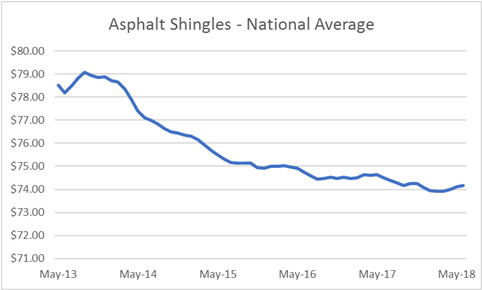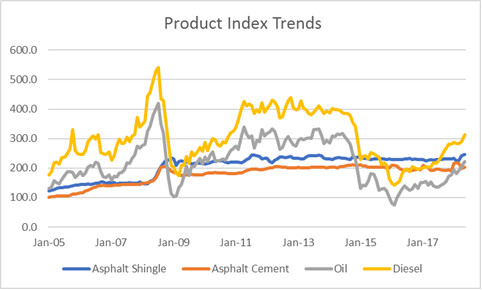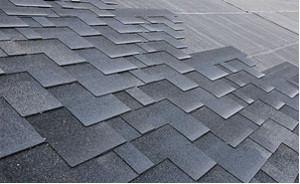Tariffs and Rising Oil Prices Drive Roofing Materials Up

The average price nationally for roofing materials, like asphalt shingles, has remained mostly stable the last couple years until the storms of late 2017 hit. Since the first quarter of 2018 contractors have seen prices moving upward by more than 10%.
The average price nationally for roofing materials, like asphalt shingles, has remained mostly stable the last couple years until the storms of late 2017 hit. Since the first quarter of 2018 contractors have seen prices moving upward by more than 10%. Several factors contribute to the rise in roofing materials and contrary to popular belief it’s not always directly related to the price of crude oil.

CoreLogic Construction Data
Cost of Oil and Fuel
While it is possible asphalt can be affected by the change in the price of oil, it does not typically track with either light or heavy crude prices. Oil prices have receded in the last three years, yet these changes have not directly carried over to shingle manufacturing. The following graph illustrates the seasonal fluctuations of asphalt shingles compared to the price of oil and diesel fuel.

US Bureau of Labor Statistics
Asphalt flux is a major component of asphalt shingles but not all refineries produce it. Refineries with Cokers, which is essentially a huge furnace, may choose to further process residual oil into petroleum coke used for aluminum and steel production. If they do, it means there’s less flux to make asphalt. Historically asphalt production is much less volatile compared to diesel and gasoline production.
Contractors are more likely to see price increases as a result of additional fuel surcharges on transportation of materials, so in some ways it is related to the price of oil. The higher fuel costs will continue to put pressure on national average truckload rates. Flatbed freight rates are up 10% the first half of 2018 due to load-to-truck ratios nearing 100%.
New Tariffs
In addition to fuel prices, recent tariffs are driving up roofing products
ALUMINUM AND STEEL: The United States, once a powerhouse steel production, now has to compete with China’s low wages and government subsidies as China floods the worldwide steel market with cheaply priced materials. China is responsible for 90% of the world’s steel production. The Trump Administration added tariffs that increased imports of steel and aluminum by 25 percent and 10 percent, respectively.

CEDAR SHINGLES: US Customs and Border Protection announced in March that all wood shingles and shakes from Canada will fall under the Anti-dumping/Countervailing Duty that was put in place last year on softwood lumber. This is an increase of more than 20% duty on the price of any of these shingles and has increased shingle costs by at least that amount, overnight. Unfortunately, the order is retroactive and applies to truckloads of shingles crossing the border regardless of when they were ordered.
Hurricanes and Fires
Last year was an active year for catastrophic events. The severe damage and flooding to the Texas Gulf Coast, Florida, Georgia, South Carolina, and the remaining Southeastern United States has national implications on the cost of building materials. That theory has been tested as the hurricane season has been among the worst in recorded history and wildfires in the West destroyed more than 9,000 structures in California alone and damaged countless more. The sheer amount of work to be done has led to higher prices and longer wait times.
The price of roofing materials affects the cost of residential construction in both new home construction and repair or restoration work. Asphalt shingles are a major component of residential roofing which comprises nearly 4% of the total construction cost of a home and roofing is often the most dominant driver of severity for insurance companies. The shingle market is under pressure from changes in prices that are occurring for reasons noted here as well as an increase in actual construction activity.
To assist in keeping you informed of the latest pricing movements, CoreLogic continues to monitor reconstruction cost throughout the United States and Canada.
Looking for a reprint of this article?
From high-res PDFs to custom plaques, order your copy today!


